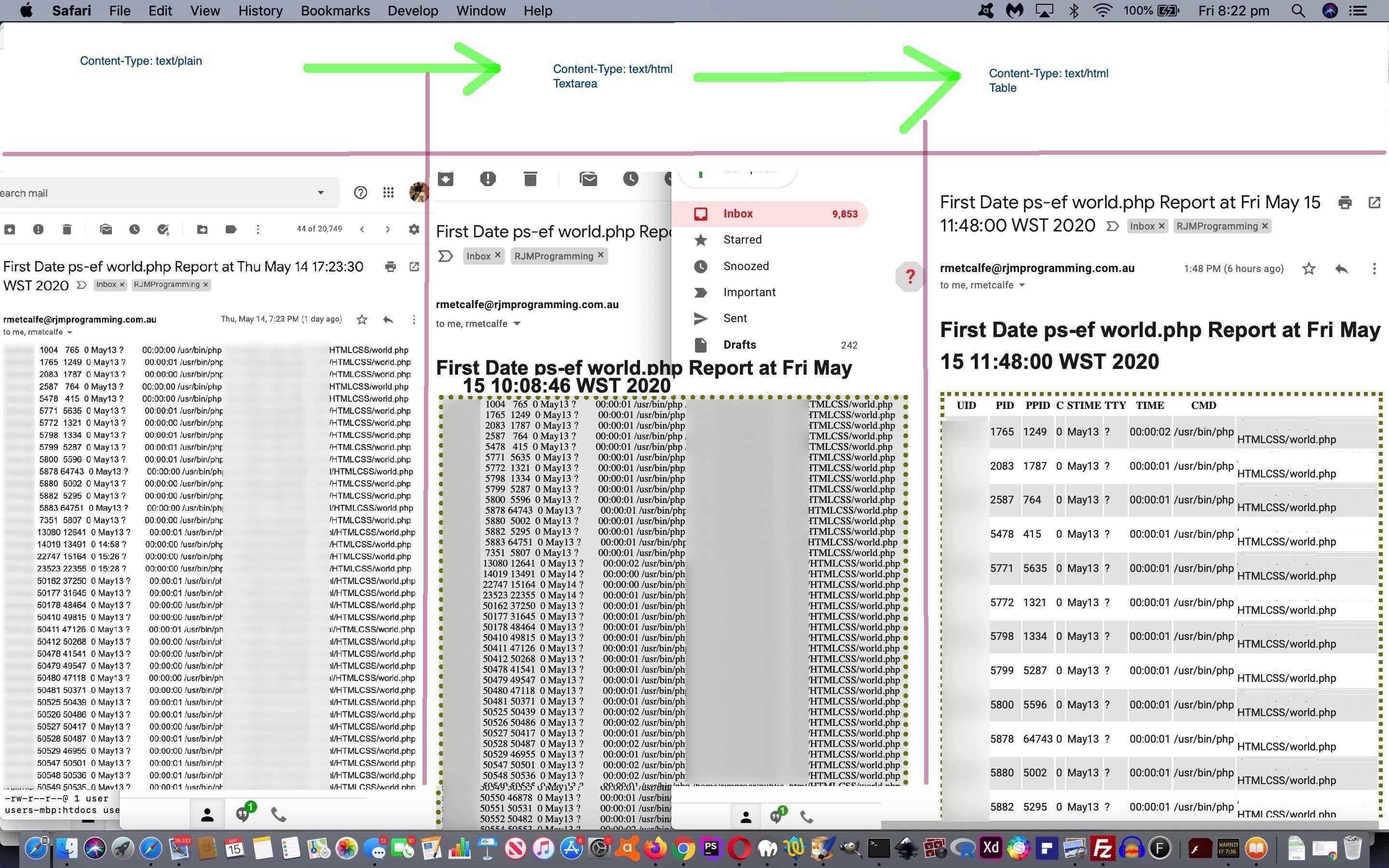

Moreover, you won’t receive bounce back messages if there is a delivery failure. Thus, the overall deliverability of email messages sent via PHP mail () is not guaranteed.


The messages dispatched will not benefit from the SPF and DKIM setup on your domain, therefore, the messages will likely be treated as spam by the receiving MTA (Mail Transfer Agent). Keep in mind that when you send emails with mail(), you may come across some grave deliverability issues.
add additional parameters to the `sendmail` command. include additional headers to the message. create simple HTML/text messages without attachments and images. Here’s what you can do with PHP built-in mail function(): Mail() is a wrapper on top of the sendmail utility, so sendmail has to be installed in the system first. While the mail() function can be a simple and lightweight option for sending emails in some cases, it is not recommended for production use and is generally considered less robust than other email sending options available in PHP. – Security concerns: The mail() function can be vulnerable to email injection attacks, where an attacker can inject additional headers into the email message, potentially compromising the security of the email system. This can limit the functionality of your email sending application. – Lack of features: The mail() function does not support many advanced features such as SMTP authentication, email tracking, and attachments. This can cause deliverability issues and make it difficult to ensure that emails are being delivered to recipients. – Deliverability issues: The mail() function relies on the local mail server configuration, which can result in emails being flagged as spam or rejected by some email providers. Here are some reasons why mail() is not commonly used for sending emails in PHP: The PHP function mail() is a built-in function for sending emails in PHP, but it has some limitations and potential drawbacks that make it less popular than other email sending options. We’ll go step-by-step through all of them. Third-party email sending services like Mailtrap, Sendgrid, Mailgun, etc. 
What options do you have to send emails in PHP? PHP mail() also does not usually allow you to send mail using an SMTP server externally, and it does not support SMTP authentication. Three, the PHP mail function () sends emails from your website, which may cause issues with deliverability due to security concerns such as suspicion of spam and blacklisting. You won’t be able to add attachments to your email, and building a beautiful HTML template with embedded images will be a tricky task as well. Two, although PHP’s built-in mail function () is very simple, it provides limited functionality for sending emails. One, there is a built-in PHP mail() function and it is quite simple. Send mail from PHP: three important things that you need to know right away That said, let’s check out this tutorial that will help you send emails from PHP today. W3Techs reports that, as of January 2023, “PHP is used by 77.5% of all the websites whose server-side programming language we know.” You might be skeptical and thinking even in 2023? Yes, even in 2023. Technologies advance – so does the world every day.








 0 kommentar(er)
0 kommentar(er)
